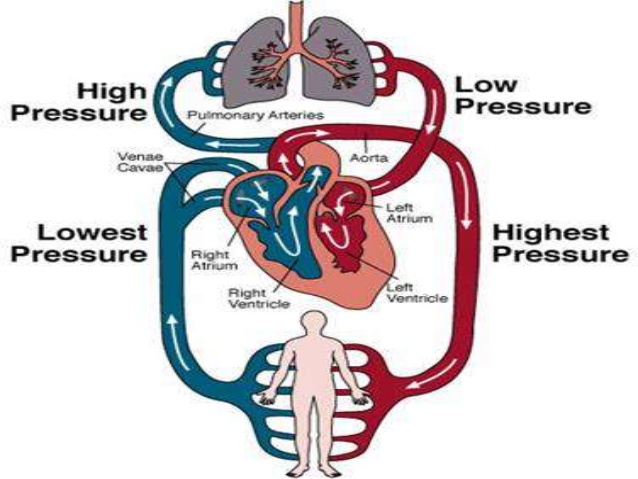Pulmonary and systemic circulation are two separate cardiovascular systems for distributing oxygen-rich blood from the heart and lungs throughout the body. Pulmonary circulation is the transport of deoxygenated blood from the heart to lungs and after oxygenation in lungs back to heart while Systemic circulation is the transportation of the oxygenated blood from the heart to the body and bringing back deoxygenated blood of the body to the heart.
Difference Between Pulmonary And Systemic Circulation Definition Circulation Pathway Importance
Systemic vs Pulmonary Circulation.

Pulmonary circulation vs systemic circulation. The systemic circuit is the path of circulation between the heart and the rest of the body excluding the lungs. The part of blood circulation that carries oxygenated blood away from the heart to the body and returns deoxygenated blood back to the heart. It absorbs oxygen from tiny air sacs the alveoli and releases carbon dioxide to be exhaled.
Pulmonary circulation carries deoxygenated blood whereas systemic circulation carries oxygenated blood. The systemic circulation comprises different forms of blood vessels such as muscular tissues that branch into much smaller sizes throughout the body. Flow 5Lmin Continuous at capillary In spont vent expiration intrathoracic pressure.
Pulmonary Circulation vs. Where the systemic arterioles would vasodilate eg. Pulmonary circulation facilitates the process of external respiration.
The pulmonary circulation is a low pressure low resistance system and it contains much less blood than the systemic circulation 500ml vs. The system known collectively as circulation is a. Enjoy the videos and music you love upload original content and share it all with friends family and the world on YouTube.
Systemic and Pulmonary Circulations Differentiate between the different portions of the cardiovascular system. The part of blood circulation which carries oxygen-depleted blood away from the heart to the lungs and returns oxygenated blood back to the heart. About Press Copyright Contact us Creators Advertise Developers Terms Privacy Policy Safety How YouTube works Test new features Press Copyright Contact us Creators.
76 3500mL LALV 4 Arteries. Systemic circulation refers to the circulation of blood in which oxygenated blood is pumped from the heart to the body and deoxygenated blood is returned back to the heart. Volume supine Total.
This blood is circulated from the aorta to the rest of the body by various major and minor arteries. One of the main differences between systemic circulation and pulmonary circulation is the type of blood that is being moved. The place where the.
Hypoxia hypercapnia the pulmonary arteries will do the opposite and vasodilate. After moving through the pulmonary circuit oxygen-rich blood in the left ventricle leaves the heart via the aorta. The pulmonary circulation comprises two main vessels which branch to the lungs.
The blood that is returned to the heart from the body via the veins has been depleted of oxygen or deoxygenated and must receive oxygen again in the lungs before being re-circulated back to the body. 16 800mL RA RV 4 to 9 when upright Arteries. Deoxygenated blood flows into the lungs.
The function of the human circulatory system is to transport oxygen and nutrients to the tissues but also to transport wastes to the kidneys and lungs for excretion. The blood flow in the systemic circulation is distributed regionally according to organ system demands. Pulmonary circulation only occurs between the heart and the lungs.
Pulmonary circulation systemic circulation and coronary circulation. Systemic circulation facilitates internal respiration.